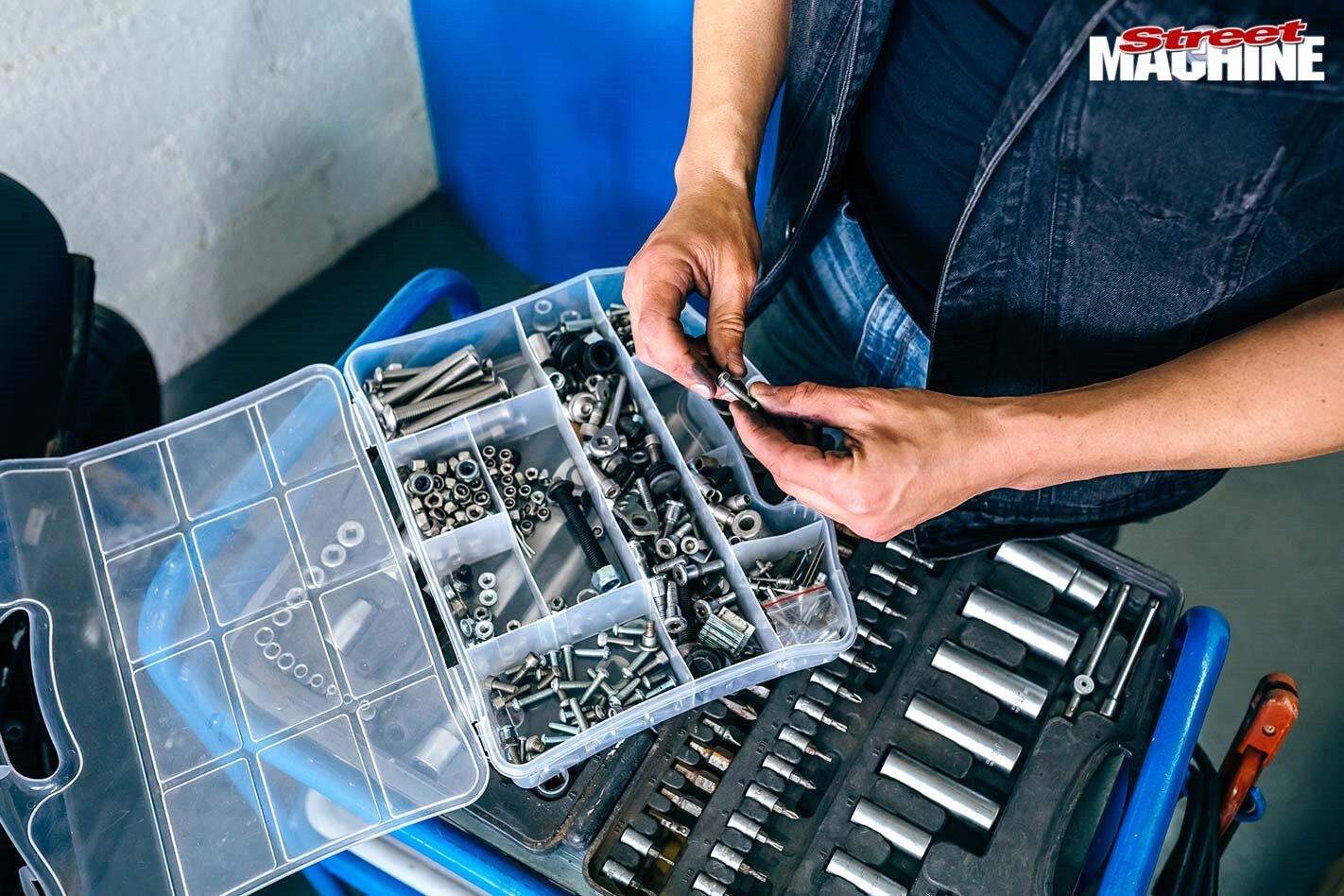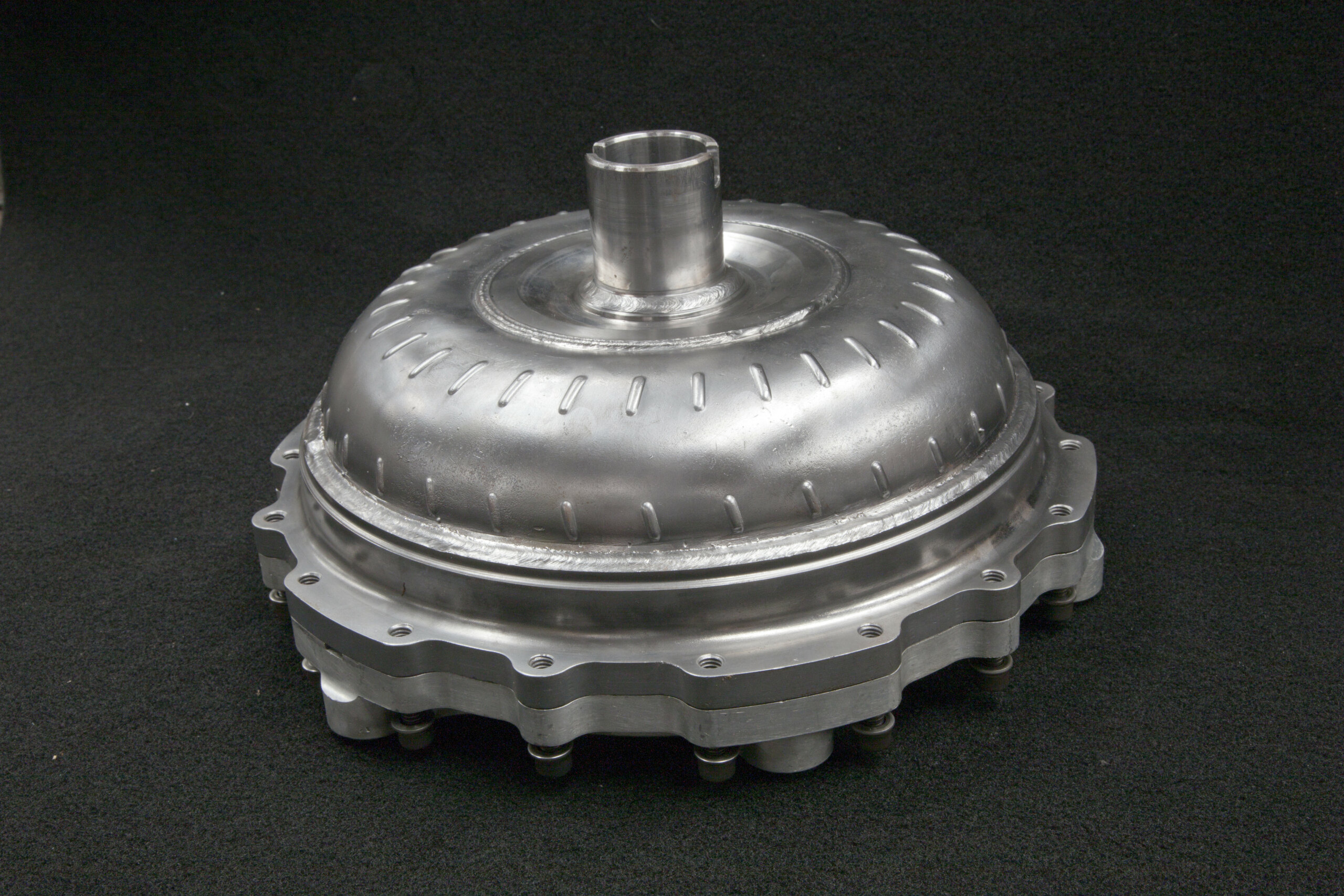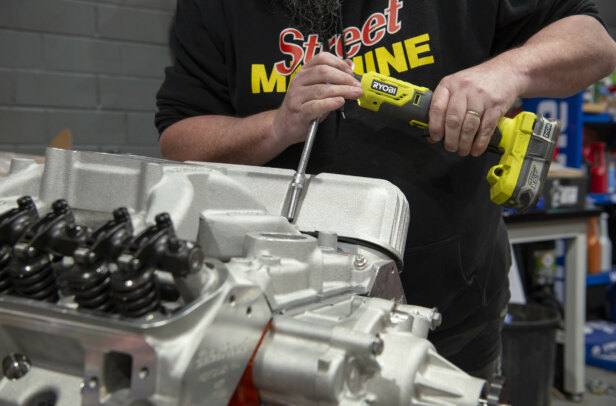For safety and reliability, it’s important to choose the proper grade and the correct installation to ensure you’re safe in your machine.
The main grades of steel bolts and screws in both imperial and metric are shown in Table 1 (see below).
BUCKET OF BOLTS
Mild-steel bolts (also called Grade 2 or metric 5.8) have a proof strength of about 385MPa. Proof strength is the stress that the fastener will withstand without any permanent set (irreversible damage). Grade 5 bolts have a proof strength of 600MPa, and Grade 8 has 840MPa. So the better the grade of the bolt, the more load it will withstand while still remaining elastic. When the load is released, a high-grade bolt returns to its original length and remains elastic, whereas a lower-grade one may go plastic and be permanently extended.
Most engineers use a factor of 60 per cent for the strength of a bolt in shear, so this is a useful rule for you to use in selecting the right size and grade for shear applications. I think it’s fair to say that most modified vehicles are overdesigned in terms of fastener sizes, and in most cases it errs on the side of safety, but in some it can make things look truck-like. Smaller fasteners can make a vehicle look sharper, but, as one of my lecturers once said, if tractors were built on the limit of engineering no farmer would buy one because it would look too weak. In modern cars, however, we are now seeing the use of much smaller fasteners – so you decide! Many modifiers use socket-head fasteners, and these are all Grade 8 quality.
After selecting the right size of fastener, the selection of the grade should be based on the balance between tensile strength, ductility and toughness. Tensile strength is the ultimate strength of the material used in the fastener. Ductility is the amount the fastener will stretch before it fails. Toughness is about fatigue resistance and the ability to withstand cyclic stresses.
So understanding these facts about physical metallurgy, it becomes easier to select the correct grade of bolt.
For a seatbelt bolt, we want a ductile fastener that stretches a lot before failure, by which time the stress of a collision is over and the passenger is saved. For that reason, seatbelt fasteners are a mild grade and should not be replaced with high-tensile bolts, which reach their peak stress and fail suddenly. Similarly, Grade 2 or ungraded fasteners can also be used for mudguards, running boards, firewall fixings and other non-critical applications where stresses are low.
I think that Grade 5 (metric 8.8) fasteners are suitable for almost anything else on a modified vehicle. They have the tensile strength without the brittleness of a Grade 8 bolt. In suspensions they will resist the cyclic loads, and in other applications they will give shear and clamping strength without coming loose from ductility or overtightening.
For critical engine situations such as cylinder-head bolts and differential gearsets, the Grade 8 bolt is the way to go, where proper torqueing preloads the clamped joint with minimal bolt stretch.
GO NUTS
Nuts are generally made from low-carbon or mild steel, similar to a Grade 2 bolt. This may sound strange, but the length and thread design of nuts are determined so that bolts can achieve full strength under load. It means that if you over-torque a fastener you often strip the nut first, leaving the bolt intact.
When you torque a fastener to a specification, you are applying a preload that resists a load in the opposite direction, and also stresses the fastener to a point where additional load will not stretch the fastener and cause it to loosen.
Proper torqueing of all fasteners on a vehicle is important, but in less critical areas it is achieved using experience and conventional spanners. A spanner is designed for a specific fastener size; the bigger the fastener, the longer the spanner, in order to provide correct torque from the strength of a ‘standard’ person. You’ll all remember that the apprentice always breaks the quarter-inch screws until he or she learns that they must ease up on the smaller ones.
Nyloc nuts are very common on street-car projects and have pretty much replaced the old-faithful spring washer. They perform particularly well in applications where vibration or rotation is a factor, or where access is difficult for maintenance inspection. Ensure that there is at least one thread protruding through the nut for proper engagement. Do not use nylocs where heat will melt the nylon retaining material, and don’t overuse them once they have been undone more than twice.
TIPS
- Locate fasteners so that if the nut does come undone, the bolt or screw remains in place and can still do part of its job of location. Therefore, put the heads up or facing forward.
- Use correctly sized washers to suit the fastener shank. Clearance of 0.5 to 1mm is normal. Oversized washers can cause problems with location of clamped components.
- Make sure that you fit spacer tubes or bosses inside hollow items that are being clamped by a fastener, to avoid distortion of the hollow member during torqueing or under operational stress resulting in a loose fastener.
- Think about the thickness of material that fasteners bear up against in a bracket or item you are designing, so that the bolt does not overstress the parent material causing a slot that introduces poor performance and looseness to that joint.
- Similarly, ensure that holes you drill are not oversized for the fastener being used, or looseness, rattling and slotting will result. For fasteners under 6mm, a rule of thumb is 0.5mm clearance, and for 6-16mm, use 1mm as the clearance hole size. I can’t think of any fasteners bigger than 16mm needed on a street car.
- Stainless fasteners are great for their appearance on body components, but make sure that you order high-strength bolts from a good supplier for suspension, engine manifolds and higher-load applications.




Comments